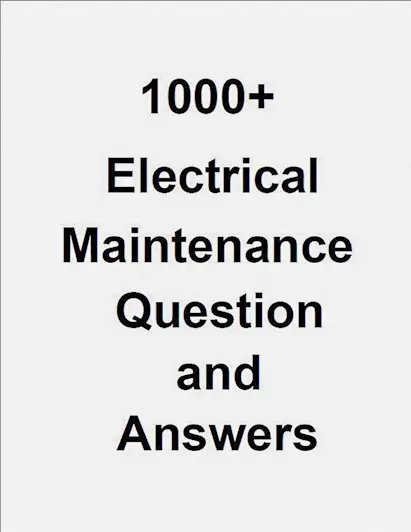Are you ready to demystify the world of electrical maintenance? We’ve compiled a comprehensive list of 1000 questions and answers to help you navigate the ins and outs of electrical systems. Let’s break it down together!
Understanding the Basics: Electrical Maintenance Essentials
- Why is electrical maintenance important?
- What are the common causes of electrical failures?
- How often should electrical maintenance be conducted?
- What safety precautions should be taken during electrical maintenance?
- Can electrical maintenance help reduce energy consumption?
Troubleshooting Tips: Addressing Common Electrical Issues
- How can you identify a tripped circuit breaker?
- What are the signs of faulty wiring in a home?
- How can you test if an outlet is working properly?
- What should you do if you experience frequent power surges?
- How do you safely replace a light switch or outlet?
Advanced Insights: Delving Deeper into Electrical Systems
- What is the difference between AC and DC power?
- How does grounding protect against electrical hazards?
- What are the benefits of installing surge protectors in a home?
- How can you optimize the efficiency of your electrical appliances?
- Why is it important to hire a professional for complex electrical repairs?
Expert Advice: Maximizing Electrical Maintenance Efficiency
- What tools should every homeowner have for basic electrical repairs?
- How can you create a preventative maintenance schedule for your electrical system?
- What are the telltale signs that indicate it’s time for an electrical upgrade?
- How can you prioritize electrical maintenance tasks based on urgency?
- Why is ongoing education important for staying informed about electrical trends?
Description
- What is static electricity? Static electricity means electricity at rest. If we join a charged conductor to another conductor, electricity flows from one to the other. This way an electric current is produced, which lasts for a moment only. Static electricity is no use. Rubbing of two different materials having different electrons produces this.
- What is current? Flow of electrons in any conductor is called electric current. Its symbol is ‘I’ and measuring unit is Ampere measured by ammeter or ampere meter.
- What is electro-motive force (emf) or voltage? It is the pressure that moves the electrons to flow in any conductor. It is also known as electromotive force voltage. Its symbol is ‘E’ or ‘V’ and measuring unit is volt measured by voltmeter.
- What is potential difference (P.D)? The difference of potential between two points in a circuit is the voltage required to drive the current between them or the voltage drop between those two points is called the potential difference.
Congratulations on unlocking 1000 electrical maintenance questions and answers! By expanding your understanding of electrical systems, you’re better equipped to handle maintenance tasks with confidence and efficiency. Stay curious, stay informed, and let’s continue exploring the fascinating world of electrical maintenance together.
Solar Safe – ELECTRIFYING NEW Money-Making VSL Green Energy Offer!


It’s really good think to know.